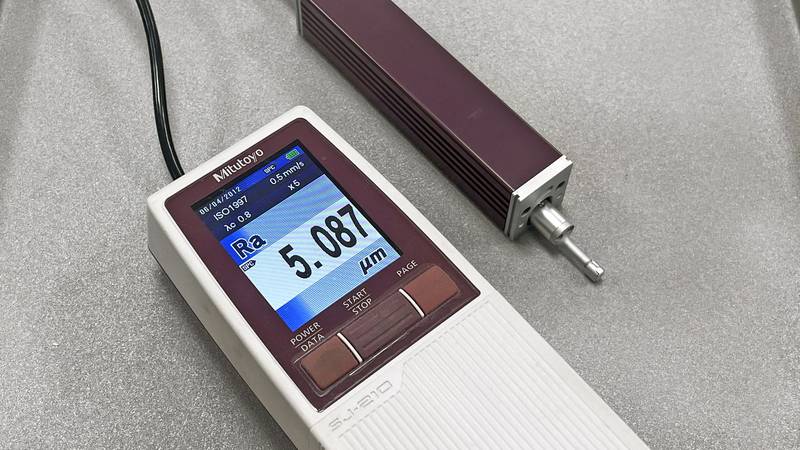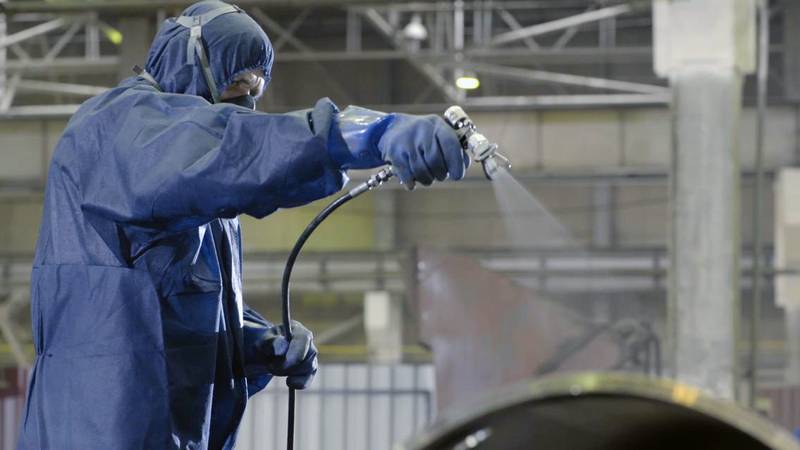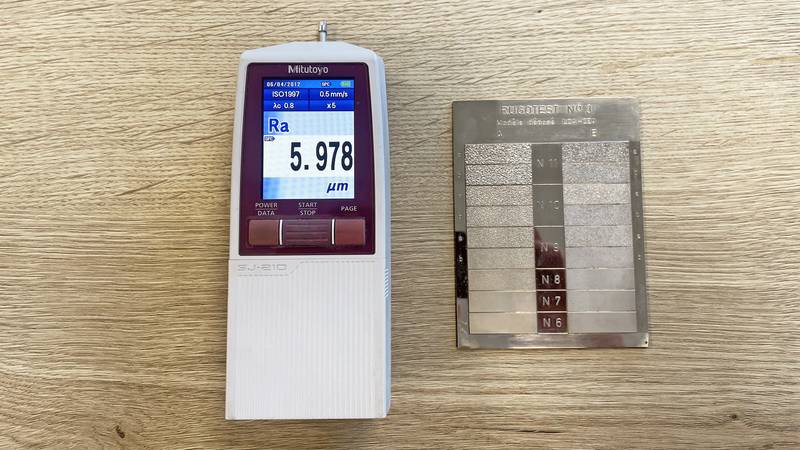Understanding surface roughness
Surface roughness is a key factor in the blasting industry, influencing coating adhesion, wear resistance, and overall performance. It refers to the microscopic peaks and valleys created on a surface during blasting, measured in micrometers (μm). Proper understanding and control of surface roughness are essential for optimal results in various industrial applications.

Surface roughness is commonly utilized to meet adhesion requirements for coatings. Additionally, it can be applied in other areas, such as enhancing friction for specific processes or improving the cleanability of stainless steel.
Key points about surface roughness
- Surface profile: Also known as the anchor pattern, it refers to the height of the peaks and valleys formed on a surface during blasting. This profile is critical for creating a mechanical bond that enables coatings to adhere effectively.
- Ra value: The most commonly used parameter for surface roughness. Indicates the average of the absolute deviations of the surface profile from the mean line, providing a simple, overall measure of roughness.
- Rz value: Measures the average height of the highest peak and lowest valley within a given length, focusing on the extremes of the surface profile.
Importance of surface roughness
- Coating adhesion: Proper roughness ensures better coating adhesion, enhancing durability, resistance to delamination, and corrosion protection.
- Performance requirements: Different applications, from light industrial to heavy-duty marine, require specific surface profiles.
- Hygienic applications: In food processing and pharmaceuticals, low surface roughness is critical for cleanability and compliance with safety standards.
Surface roughness and typical applications
- Ra <0.8 µm (very fine): High-purity environments (e.g., food processing, pharmaceuticals, medical equipment)
- Ra 0.8 - 1.6 µm (fine): Light coatings, primers, and thin film applications
- Ra 1.6 - 3.2 µm (medium): General industrial coatings and powder coatings
- Ra 3.2 - 6.3 µm (coarse): Heavy-duty and epoxy coatings
- Ra 6.3 - 12.5 µm (extra coarse): High-build coatings, thermal sprayings, and applications requiring high adhesion
While proper surface roughness improves adhesion, excessive roughness leads to unnecessary coating consumption and higher costs because deep peaks and valleys require more coating to achieve the correct coating thickness!

Factors affecting surface roughness
- Blasting pressure: Varying pressures directly impact surface roughness and cleaning efficiency.
- Abrasive selection: The choice of abrasive type and size determines the depth and uniformity of the surface profile.
Best practices
- Consult the coating supplier: Confirm if a specific roughness is necessary for the coating system warranty. Make sure to verify whether Ra or Rz values are specified!
- Test blast sample areas: Experiment with the type of abrasive, grain size, and blasting pressure to achieve the desired roughness.
- Maintain consistent nozzle distance & angle: Achieve desired roughness.
- Regularly measure Ra/Rz values: Ensure consistent roughness.
- Monitor and document results: Ensure compliance.
Measuring surface roughness in blasting
Accurate roughness measurement ensures proper coating adhesion. Common methods include:
- Stylus Instruments: Measure roughness by tracing the surface with a stylus (Ra & Rz).
- Surface Profile comparators: Compare the blasted surface to physical standards.
- Replica tape: Create a replica of the surface and measure it with a micrometer (Rz).
- Optical profilometers: Scan the surface with light or laser to create a 3D map (Ra & Rz).

Conclusion
Surface roughness is crucial for the success of blasting and coating projects. By understanding and controlling factors like abrasive size and blasting pressure, you can achieve superior adhesion, extended service life, and enhanced performance of treated surfaces. Proper surface preparation significantly boosts coating success rates.
Optimize your blasting process
Ready to enhance your blasting results? Contact Gritco today to discover how controlling surface roughness can improve your outcomes. Our experts are here to guide you through best practices and provide tailored solutions to meet your industrial needs.
